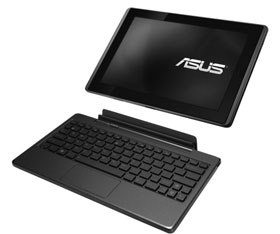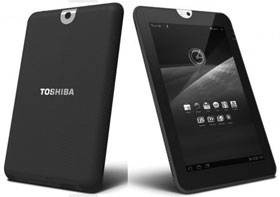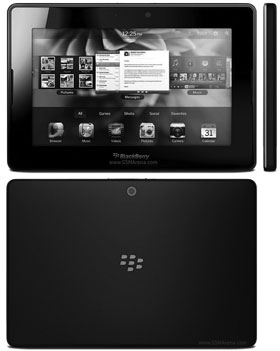Students driving tablet success
MRU studying how to use gadgets in class
BAJ Visser
Contributor
They’re appearing everywhere. Chances are if you’re on campus, there’s one near you right now.
Don’t panic, they’re only tablet computers.
The sleek mobile devices have become immensely popular over the past year, with Apple’s first generation iPad being one of the fastest-selling personal electronic devices in history.
Designed to be a “netbook killer,” the iPad devastated the market for those lightweight internet-oriented laptops and created an entirely new marketplace for tablet computers.
However, it’s not yet known what kind of effect tablets are going to have on classrooms. That’s why Mount Royal University has partnered with tech company Dell to run a pilot project looking into the use of tablets in classrooms.
This semester, three MRU courses offered students a free Viewsonic View 7 tablet, giving each class member access to the same technology.
Rod Corbett, MRU’s educational technologies specialist in the Academic Development Centre said they’re starting to see some interesting results.
“So far, so good,” Corbett said. “Students are using them, exploring them, trying them out in classrooms, so we’re seeing positive signs so far.”
Currently, 65 MRU students are now packing around these Android tablets without restrictions on their usage other than advised to behave themselves.
The tablets have built-in cameras and voice recorders and have become part of the class curriculum. Corbett said students are incorporating photos into presentations and recording interviews for qualitative studies, among other uses.
“It’s not just for note-taking or test-taking, but for using them as a professional device,” he added. “Students are using these devices in the same ways they would out in the field, in ways professionals in their industry are just starting to do themselves.”
Corbett called the evolution of tablets “exciting and scary at the same time.”
He said he sees the pilot study as extremely timely because he expects the majority of students will be bringing their own tablets within a few years.
“Ten years ago, technology in the classroom was really dictated by the professor, who brought in devices to the classroom. Now the students are bringing in way more technology, more than professors are even aware of.
We’re trying to play catch-up and figure out how to use those for teaching purposes.”
Corbett said while students might not be buying these technologies for education, “if they’ve all got it in their pockets, why not use it?”
While tablet PCs have been around since the ‘90s — Windows even offered a tablet version of XP. It was previously a niche market, for those with a need for the touch screen or slate form factor. Not anymore.
The tablet market is now bigger than the population of Canada, and it’s growing –sales jumped from 4.4 million units last summer to 17 million this time around.
And the biggest reason for that jump? According to David Miko of Best Buy, it’s students.
Before the rise of tablets, Miko said most students were looking for laptops, especially lightweight, affordable netbooks to be used at school for note-taking, Internet-browsing and other academic pursuits.
Tablets did all that, and added on a host of multimedia and entertainment options, which Miko said really boosted their appeal: “As a student, you want something you can play around with, not something that is just for work.”
So, it was a match made in heaven when Apple launched their tablet with access to their extensive iPhone marketplace.
“The boom that we saw two years back were really driven by the apps available,” Miko said. “It’s all about that app ecosystem.”
Top 5 tablets for new buyers
 Heir to the world’s most popular tablet, the Apple iPad 2 is one of the best devices on the market for hardware and software. Apple has the largest app market available. While a bit pricey and not quite as flexible as your average Android tablet, the iPad 2 provides a solid user experience for anyone, regardless of their computer savvy.
Heir to the world’s most popular tablet, the Apple iPad 2 is one of the best devices on the market for hardware and software. Apple has the largest app market available. While a bit pricey and not quite as flexible as your average Android tablet, the iPad 2 provides a solid user experience for anyone, regardless of their computer savvy.
 Do you want a new device, but are torn between a tablet and a netbook? The 10.1-inch Asus Eee Pad Transformer looks like a basic tablet, but clip on its docking keyboard and it becomes a netbook. One of the cheaper ones on the market, it provides a solid tablet for those who love their keyboards and track pads.
Do you want a new device, but are torn between a tablet and a netbook? The 10.1-inch Asus Eee Pad Transformer looks like a basic tablet, but clip on its docking keyboard and it becomes a netbook. One of the cheaper ones on the market, it provides a solid tablet for those who love their keyboards and track pads.
 Do you want an iPad, but see submitting to the cult of Apple as a personal failure? Take a look at the Samsung Galaxy Tab 10.1. This device is so close to the iPad that Samsung and Apple are fighting a battle of the patents across three continents. If you shun everything Apple, try out this 10.1-inch Android powerhouse.
Do you want an iPad, but see submitting to the cult of Apple as a personal failure? Take a look at the Samsung Galaxy Tab 10.1. This device is so close to the iPad that Samsung and Apple are fighting a battle of the patents across three continents. If you shun everything Apple, try out this 10.1-inch Android powerhouse.
 If you’ve got more memory cards and USB sticks than you know what to do with, take a look at the Toshiba Thrive. One of the few tablets to provide a full USB and HDMI port, this 10.1-inch Android tablet also comes with slots for SD cards. Not the fastest machine on the market, but if you need a USB port it’s worth trying.
If you’ve got more memory cards and USB sticks than you know what to do with, take a look at the Toshiba Thrive. One of the few tablets to provide a full USB and HDMI port, this 10.1-inch Android tablet also comes with slots for SD cards. Not the fastest machine on the market, but if you need a USB port it’s worth trying.
 This workhorse tablet is Canada’s representative on the tablet stage. The seven-inch Blackberry Playbook is lacking in apps, but what really makes it shine is Blackberry Bridge, syncing Blackberry phones to tablets and allowing users to run several core Blackberry features on the more powerful machine.
This workhorse tablet is Canada’s representative on the tablet stage. The seven-inch Blackberry Playbook is lacking in apps, but what really makes it shine is Blackberry Bridge, syncing Blackberry phones to tablets and allowing users to run several core Blackberry features on the more powerful machine.



